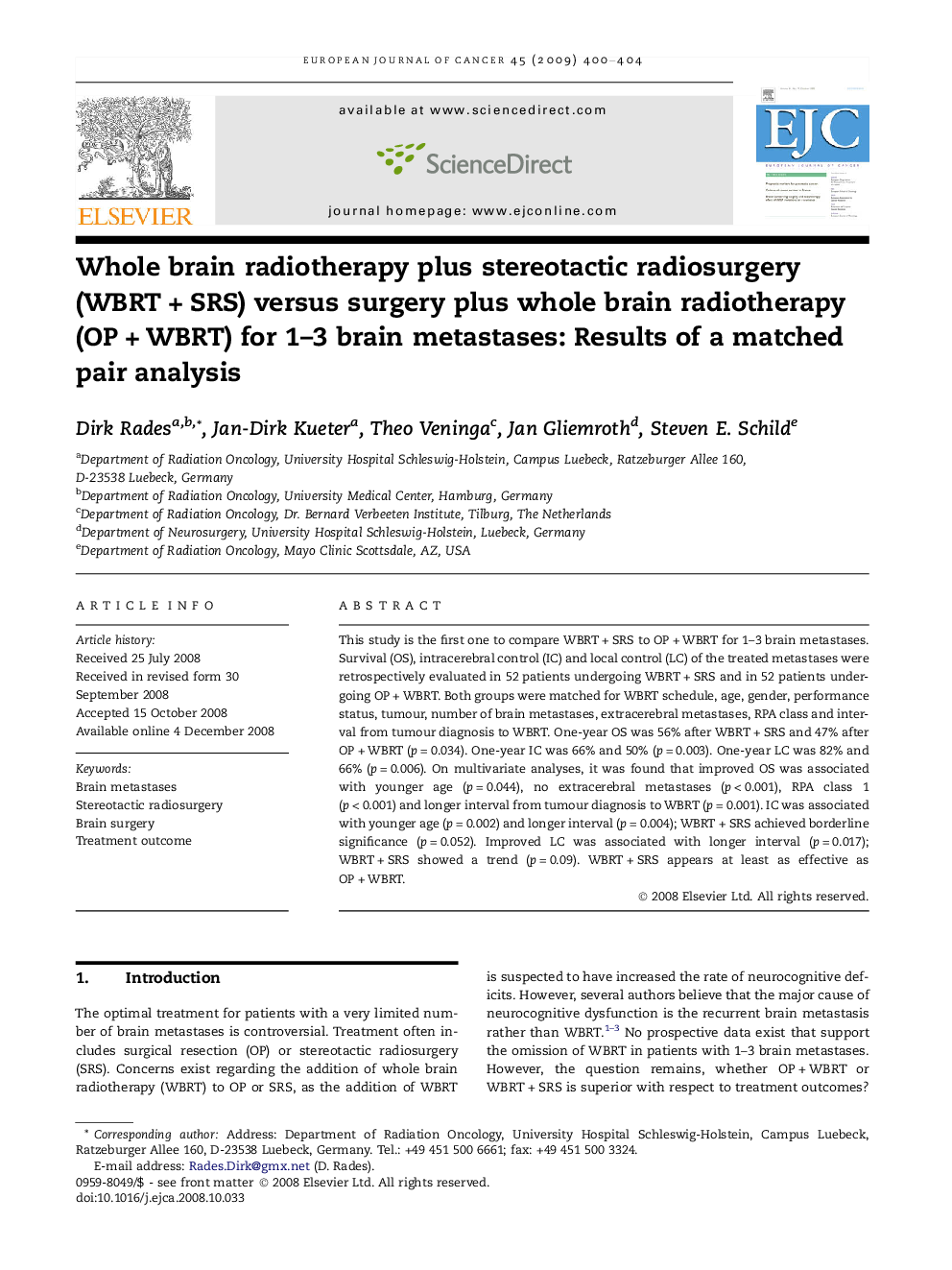| Article ID | Journal | Published Year | Pages | File Type |
|---|---|---|---|---|
| 8448362 | European Journal of Cancer | 2009 | 5 Pages |
Abstract
This study is the first one to compare WBRT + SRS to OP + WBRT for 1-3 brain metastases. Survival (OS), intracerebral control (IC) and local control (LC) of the treated metastases were retrospectively evaluated in 52 patients undergoing WBRT + SRS and in 52 patients undergoing OP + WBRT. Both groups were matched for WBRT schedule, age, gender, performance status, tumour, number of brain metastases, extracerebral metastases, RPA class and interval from tumour diagnosis to WBRT. One-year OS was 56% after WBRT + SRS and 47% after OP + WBRT (p = 0.034). One-year IC was 66% and 50% (p = 0.003). One-year LC was 82% and 66% (p = 0.006). On multivariate analyses, it was found that improved OS was associated with younger age (p = 0.044), no extracerebral metastases (p < 0.001), RPA class 1 (p < 0.001) and longer interval from tumour diagnosis to WBRT (p = 0.001). IC was associated with younger age (p = 0.002) and longer interval (p = 0.004); WBRT + SRS achieved borderline significance (p = 0.052). Improved LC was associated with longer interval (p = 0.017); WBRT + SRS showed a trend (p = 0.09). WBRT + SRS appears at least as effective as OP + WBRT.
Related Topics
Life Sciences
Biochemistry, Genetics and Molecular Biology
Cancer Research
Authors
Dirk Rades, Jan-Dirk Kueter, Theo Veninga, Jan Gliemroth, Steven E. Schild,
